Meet the artist behind NYC’s notable anti-hate campaign.
Columbia College | Columbia University in the City of New York
Meet the artist behind NYC’s notable anti-hate campaign.
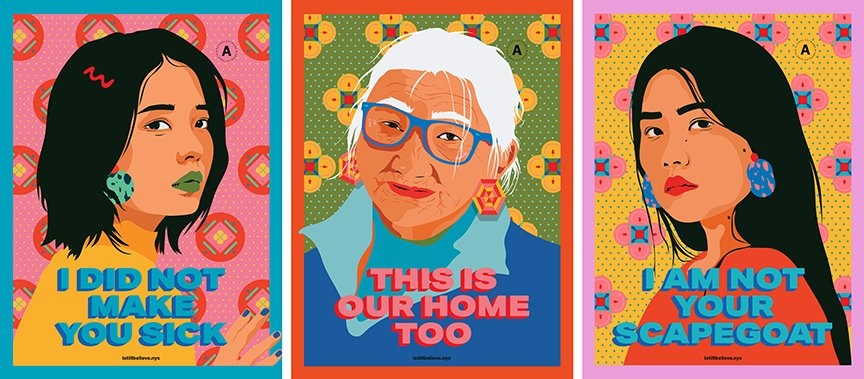
Images courtesy Amanda Phingbodhipakkiya ’10
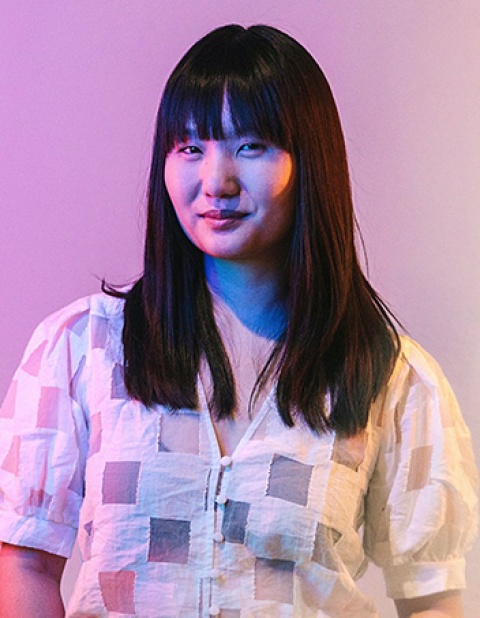
Phingbodhipakkiya’s partners at the commission quickly collected statistics that galvanized her: From February through July 2020, it had received 184 reports of anti-Asian discrimination, harassment and bias — a sevenfold increase from the prior year. They also provided her with a residency schedule that baffled her. By their timeline, she would have spent several more months in a research phase, defining what her creative project would entail.
“I think perhaps they thought [having the structure] would be helpful, and I understand that,” Phingbodhipakkiya says. “But I’ve never been one for the straight path. I definitely felt like I don’t need permission — and I don’t need to wait to create work for my community when we most need it.”
Less than three months later, on Election Day, Phingbodhipakkiya’s anti-hate art campaign “I Still Believe in Our City” was unveiled at Atlantic Terminal in Brooklyn. The installation took over the sprawling transit hub — 45 posters and larger-scale banners, drenched in vibrant color, that both raised awareness and affirmed belonging.
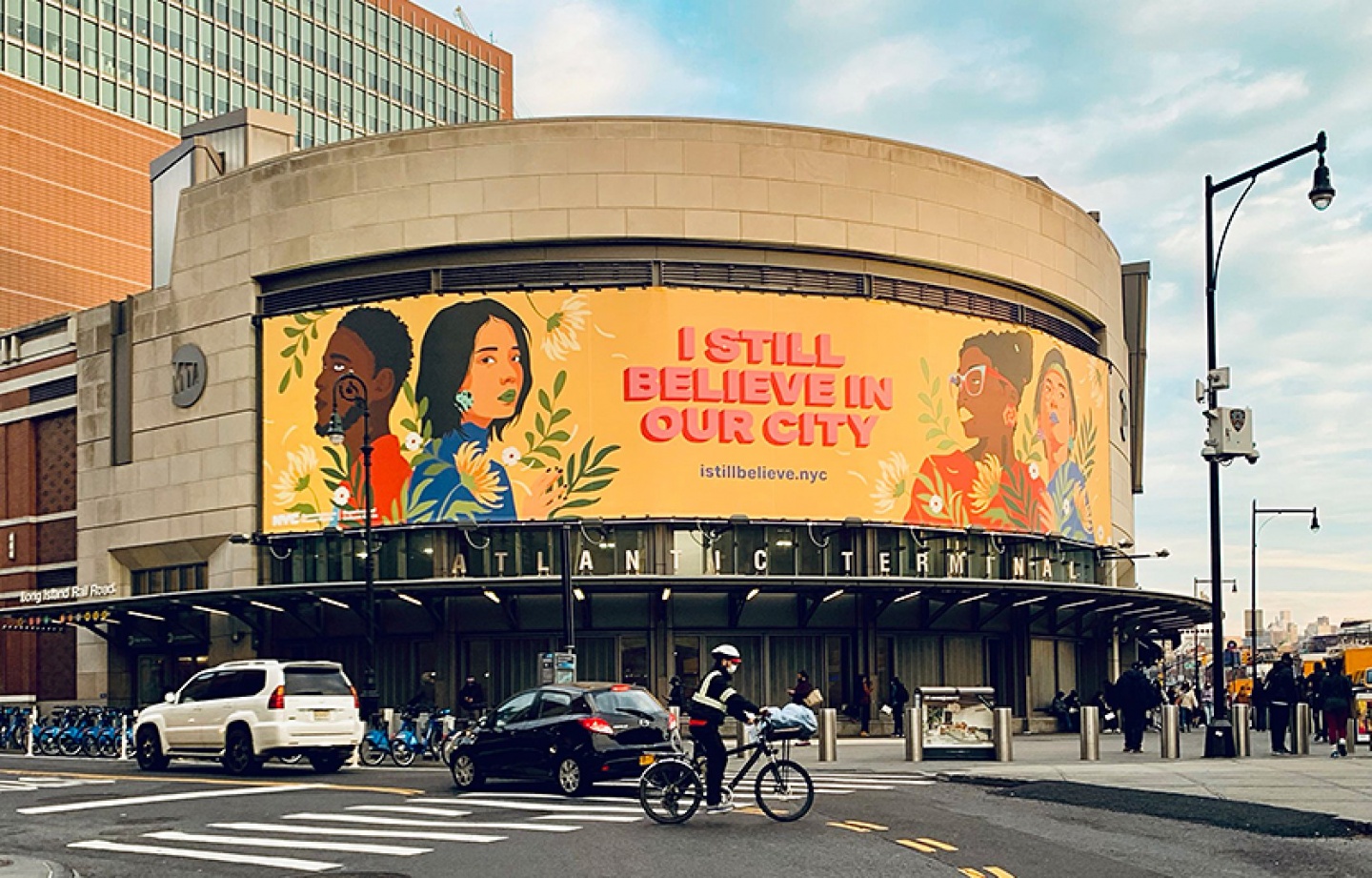
Outside Atlantic Terminal in Brooklyn.
Some works employed hate speech (“go back,” “your fault”) while others demanded action (“abolish brutality,” “enact justice”). They included startling accounts of and statistics about anti-Asian bias incidents. And perhaps most arresting, they featured brightly hued portraits of Asian and Pacific Islander New Yorkers, paired with proud and defiant messages: “I did not make you sick.” “I am not your scapegoat.” “This is our home too.” Some of the portraits — including a flagship banner that emblazoned the exterior of the terminal — showed Asian Americans alongside African Americans, a deliberate signal of solidarity with the Black Lives Matter movement.
Phingbodhipakkiya says the campaign was largely about reclaiming space. “Despite everything that has happened to us as Asian Americans and as New Yorkers, we’re still here, fighting every day for our shared future,” she says.
“I think it is important to acknowledge that it is a shared future,” she adds. “We are often so focused on fighting our own battles we forget that sometimes we are fighting the same battle. Much of ‘I Still Believe’ is about reaffirming our belief in this city to support us, and its citizens to support each other, and in our collective ability to make change for a more just world.”
The rich palette is key to the campaign’s power: orchid purple and flamingo pink; golden yellow; electric orange; teal, sky and royal blues. Phingbodhipakkiya drew the colors from Thai and Indonesian culture, both part of her heritage. But she also chose them because of her belief in the power of color to spark joy: “I think the simplest act of resistance, which doesn’t even require external effort on our parts, is to be able to have joy in times that are so incredibly challenging for our communities,” she says.
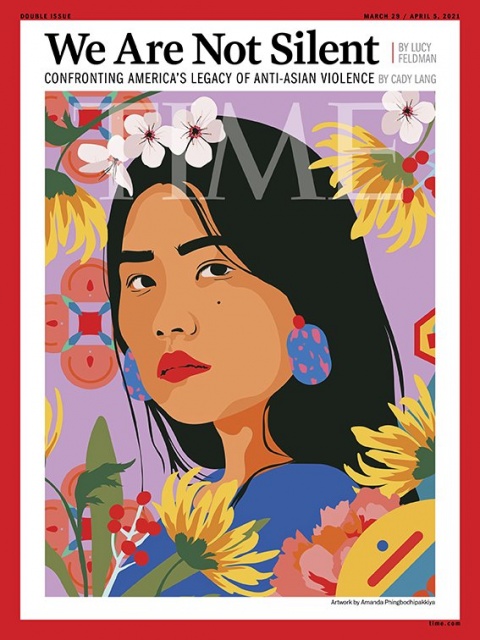
Phingbodhipakkiya’s work on the cover of TIME.
Phingbodhipakkiya says she is proud to have been part of TIME’s response, adding that the request was unexpected. “From the time they reached out to me to the time we had to send things to print was three or four hours, something absolutely insane,” Phingbodhipakkiya says. “But an Asian-American photo editor really fought for this work to be on the cover.” The woman in the portrait, which Phingbodhipakkiya titled “With Softness and Power,” is surrounded by flowers: peonies for solidarity and friendship; chrysanthemums for resilience (mums can bloom in the cold); and hawthorn berry for longevity and protection. “In these times we don’t need things that are dark,” she says. “We already feel the darkness.”
“I think many Asian Americans are having an awakening in terms of the racism that they have faced for many, many years — ‘I have been taking this for so long and I didn’t even fully realize.’ We’re all finally feeling all the weight.”
Phingbodhipakkiya is a multidisciplinary artist and works in a range of mediums, from large-scale murals and public art campaigns to 3D printing and augmented reality. The through line comes from her desire, as she says, to make the invisible visible — “that may be microscopic worlds or outer space, or the often-unseen struggles of communities of color.”
If her juxtaposition of science and social justice seems surprising, it might help to know that Phingbodhipakkiya came to art by way of neuroscience. She was on a pre-med track at the College, majoring in neuroscience and behavior. (Even earlier, she was a classically trained ballerina; before an injury freshman year she was auditioning for contemporary ballet companies.) Then Phingbodhipakkiya had an aha moment; a few years into her job at an Alzheimer’s research lab at the Columbia University Medical Center, a research participant asked what he could tell his family about their project. “I remember grasping for the words to share this incredible work we were doing,” she says. “I just handed him our very dense paper, and then immediately felt terrible about it.” The experience moved Phingbodhipakkiya to begin thinking about how to better tell stories for science; she enrolled in a communications design program at Pratt, and in 2015 earned an M.F.A.

Connective Tissue’s interactive exhibits called on museum-goers to work together.
Among Phingbodhipakkiya’s most significant projects is Beyond Curie, a visual celebration of “badass women” in STEM that she created in part to establish a set of role models for kids. The vivid posters (40 and counting) combine graphics with portraits of women whom, admittedly, you might not have heard of: Lisa Ng, a groundbreaking virologist; Mae Jemison, the first Black woman in space. But these pioneers’ unsung nature is the point. “I looked around and, a little bit shamefully, realized I didn’t know too many women scientists beyond notables like Marie Curie,” Phingbodhipakkiya says. “There are so many other women, especially women of color, who have driven our society forward but have been just written out or left out of history.”

Designs from Beyond Curie were used in posters for 2017’s March for Science.
Beyond Curie won a Fast Company Innovation by Design Award and was promoted for use by the March for Science in 2017. (“It was the first time somebody had carried my work at a protest,” Phingbodhipakkiya recalls. “I met a Ph.D. student who had bedazzled my Rosalind Franklin poster with jewels, ruffles, everything — it was amazing.”) In March 2018, the North Carolina Museum of Sciences dedicated an entire wing to showcasing the works; the exhibition only closed at the end of 2020.
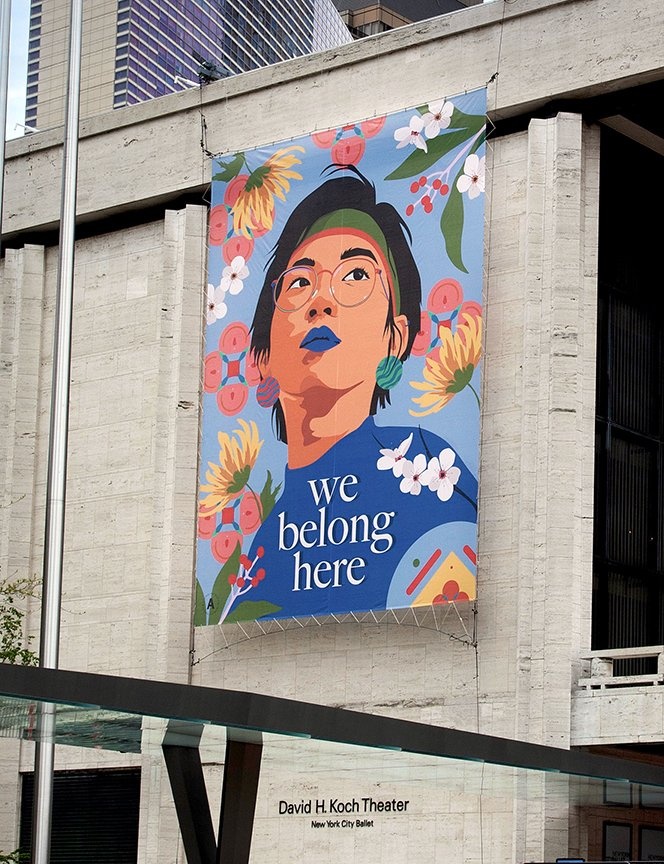
Adapted work from “I Still Believe In Our City” adorned Lincoln Center.
Phingbodhipakkiya doesn’t shy from speaking to the intensely personal aspects of her more recent work.
“It’s like all the collective microaggressions and the racism that I experienced in the course of my life were dammed up inside of me,” she says. “And in the creation of this work, the dam just broke — waves of anger and grief and pain. I think this experience is very much shared by many Asian Americans, where we kept it inside to survive but now we are being given permission to feel. To be fully human.
“My hope is that with my art, I help people connect to their own humanity and then start to empathize with others,” she says. “Public art can very much build connection when there’s seemingly no connection, and I think the power of portraiture and depicting faces — it’s not just representation. The complex combination of emotions on a face allow so many different access points. Wherever you are in your day or your journey of awakening, you can connect to some part of it. Maybe it’s the woman’s hopeful eyes, maybe it’s her defiant mouth. Some part of it will speak to you.”

Published three times a year by Columbia College for alumni, students, faculty, parents and friends.
Columbia Alumni Center
622 W. 113th St., MC 4530, 6th Fl.
New York, NY 10025
212-851-7852
cct@columbia.edu

Columbia Alumni Center
622 W. 113th St., MC 4530, 4th Fl.
New York, NY 10025
212-851-7488
ccalumni@columbia.edu